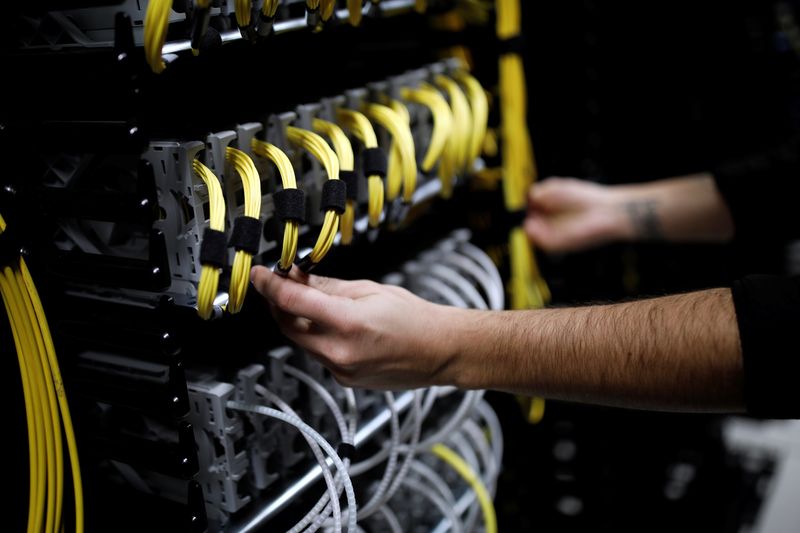China’s Xi speaks with Trump by phone, discusses Taiwan and bilateral ties
Investing.com -- The Supercomputing 2025 (SC25) trade show took place from November 16 to November 21, offering a clear read on how the data-center infrastructure market is evolving as AI workloads intensify and power and thermal demands rise.
Conversations across the floor pointed to firm demand, expanding pipelines and multi-year visibility, with companies describing an environment where supply is racing to keep up.
Get deeper analysis on the top-performing industrial AI and data-center infrastructure stocks by upgrading to InvestingPro - get 55% off today
1) ’No signs of a bubble at ground level:’ Executives repeatedly pushed back against the idea that the industry is overheating. The tone across meetings suggested confidence that “demand is strengthening (and broadening), pipelines continue to expand, and visibility extends beyond the end of 2028," Wolfe analyst Nigel Coe noted.
Companies contrasted today’s supply buildout with the late-1990s telecom cycle, noting that current capacity additions reflect real, near-term requirements rather than circular financing. Power supply constraints were flagged as the main potential bottleneck.
2) ’Liquid cooling front and center:’ The shift toward higher-power GPUs is accelerating adoption of liquid cooling. Coe highlights that the “migration to NVIDIA GB200 chips has tilted the market fully towards liquid cooling solutions,” centered on single-phase, direct-to-chip technology.
Two-phase systems remain in development but are viewed as a 2–3 year story as density ramps with Rubin Ultra in 2027 and Feynman in 2028. Immersion cooling remains sidelined due to technical hurdles.
3) ’High Voltage DC Power products:’ More vendors are preparing for a move from AC to DC rack power, Coe said. Vertiv and Eaton highlighted early high-voltage DC products that promise material efficiency gains.
Adoption is expected in high-density “islands” over the medium term, with full DC distribution unlikely until around 2030. The analyst says this transition will “fundamentally alter the power value chain,” reshaping the role of UPS and PDU equipment.
4) ’Modular solutions:’ Consolidation is reshaping the competitive landscape, Coe argued in the note. The analyst highlighted that Eaton’s acquisition of Boyd and Schneider’s purchase of Motivair reflect a push to bring liquid-cooling capabilities in-house and deliver bundled packages.
The show floor featured a wide range of modular offerings aimed at lowering installation costs and shortening deployment timelines.
"That is not to say that more focused data center portfolios cannot also be successful, but it feels like the consolidation trend could continue," Coe said.
5) ’Service capability more important for liquid cooling:’ Companies emphasized the operational challenges tied to liquid-cooling systems, including coolant fouling and filter clogging.
Service is emerging as a critical moat as operators seek to maintain efficiency across primary and secondary cooling loops. Coe flagged Vertiv’s scale, citing its “~4,400 service fleet,” and calls its $1 billion PurgeRite acquisition an “astute purchase,” positioning the company to expand its fluid-management capabilities.
Overall, at the stock level, Coe said Vertiv "remains best positioned in the data center and continues to increase its presence across the data center value chain."
"However, we were most impressed with its product migration path to high voltage DC rack power offerings, and its modular offerings," he added.
The analyst also highlighted Eaton’s deepening integration with Boyd, and nVent’s expanding lineup of CDUs, PDUs and manifolds—none of which are yet included in its backlog. That suggests potential upside to orders and capacity expansion into 2026.
While industrial AI stocks have seen greater volatility as risk–reward profiles became more stretched, Coe notes that Vertiv, Wesco, and nVent remain the clear top performers since Labor Day, while GE Vernova, Eaton , and Hubbell have lagged.
The divergence is tied to full-year 2026 (FY26) earnings revisions, but the analyst adds that the sharp performance gap is beginning to create more attractive entry points — “for ETN in particular.”
